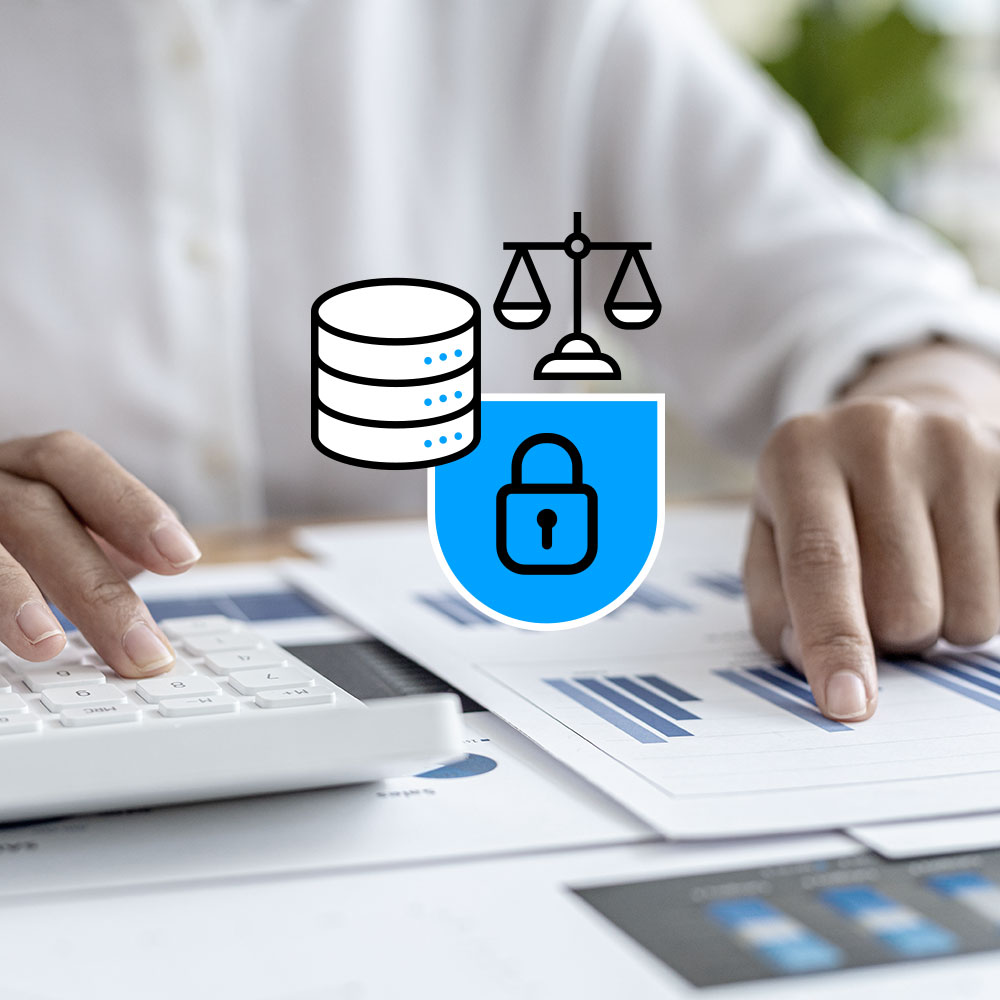Companies rely on data to create more personalized customer experiences, improve their products, and gather information about target audiences and their preferences. However, data protection laws, tech platforms’ policies, and guidelines are evolving around the world.
Consent management must be done thoughtfully to meet consumer expectations, legal requirements, and tech integration specifications. Otherwise, brands risk hefty fines, loss of data, and damage to their reputations and customers’ trust.
Still, compliant consent management is achievable. In this guide, we dive into everything you need to know about how to obtain, manage, and signal consent in a way that enables compliance with data privacy requirements and business specifications, and still delivers a great user experience. We also explain how a consent management platform can simplify this process.
What is consent management?
At its core, consent management is about providing ecommerce customers, website visitors, app users, and others with clear choices to agree to or decline the collection and use of their personal data on websites, apps, and other connected platforms.
It also requires documenting and securely storing the information once users agree to share it. For companies, customer consent management is a critical component of achieving data privacy compliance and maintaining customer trust.
What is the difference between consent and preference management?
While they might seem like similar concepts, consent management and preference management serve different purposes. Ideally, both concepts work together to enable great customer experience.
Consent management is primarily about obtaining legal permission to collect and use personal data, as required by privacy regulations, and, increasingly, by tech platforms’ policies. It involves users opting in or out of data collection and processing for specific purposes, an exercise of their rights under legal mandates and the requirements of platforms companies rely on for advertising, analytics, and more.
Preference management, on the other hand, enables users to customize their experience and communication preferences with a company. This might include choosing email frequency or communications topics of interest.
While consent management focuses on the legal aspects of data collection and usage, preference management is more about enhancing the user’s experience and personalization. It’s also a great source of zero-party data, which is highly sought by companies for marketing functions because it comes directly from the customer.
Typically, consent management is implemented through cookie banners and opt-in forms, whereas preference management is facilitated via preference centers or account settings. Both practices aim to give users more control over their interactions with a company, but they address different aspects of user engagement and data handling. The ultimate goal is holistic — to enhance marketing operations and provide better personalized experiences driven by both user consent and preferences.
Global consent management laws
Consent management laws are regulations that dictate how businesses must collect, handle, and manage the consent that individuals provide for access to their personal data. Depending on the laws in place where the business operates or their customers are located, requirements may affect all businesses, only those of a certain size, or those engaged in certain types of data handling.
General Data Protection Regulation (GDPR)
Probably the most influential consent management law of the “modern era” of data privacy was introduced in 2018 in the European Union. The General Data Protection Regulation requires companies to ask for permission before collecting or processing the personal information of EU residents if they monitor people or offer them goods or services.
Consent management, in the context of the GDPR, refers to the process of obtaining, recording, and managing user consent for the collection and use of personal data. Key aspects of GDPR consent management include:
- Explicit consent: Users must actively opt-in to data collection and processing
- Specificity: Consent must be specific to each purpose for which data is collected
- Informed consent: Users must be clearly informed about what data is being collected and how it will be used
- Freely given: Consent cannot be coerced or bundled with other terms
- Withdrawable: Users must be able to withdraw their consent as easily as they gave it
European Data Protection Board (EDPB)
The European Data Protection Board’s guidelines for consent, published in 2020, align with the GDPR consent requirements.
The European Data Protection Board is an independent European body that is responsible for ensuring consistent application of data protection rules across the European Union and European Economic Area (EEA), and promoting cooperation among EU Member States’ national data protection authorities.
The EDPB was established with the General Data Protection Regulation (GDPR) and issues guidelines, recommendations, and binding decisions to harmonize data protection enforcement, resolve disputes, and ensure that individuals’ rights to privacy and data security are upheld across the EU.
Data privacy regulations around the world
Since the GDPR’s enactment, consent management has become an integral part of data privacy compliance, and several other data privacy laws have been passed and implemented, including the following.
- The Digital Markets Act (DMA), which requires designated “gatekeeper” platforms to obtain explicit user consent before collecting or using personal data for certain purposes, such as online advertising or combining data from different services.
- Both the California Consumer Privacy Act (CCPA) its amendment, the California Privacy Rights Act (CPRA) in the United States require businesses to obtain explicit consent from consumers before collecting or using sensitive personal information. This can include precise geolocation data, racial or ethnic origin, or biometric information. Additionally, the CPRA mandates that businesses provide clear and conspicuous methods for consumers to opt out of the sale or sharing of their personal information. Methods may include placing a “Do Not Sell or Share My Personal Information” link on business websites.
- The Brazilian Lei Geral de Proteção de Dados / General Data Protection Law (LGPD) states that consent must be “free, informed and unambiguous.” In other words, it must be given voluntarily, after receiving clear information, and through a specific, unequivocal action. The law requires that consent be obtained for a specific purpose, that users can revoke consent at any time, and that special provisions are in place for obtaining consent for processing children’s data.
- Canada’s Personal Information Protection and Electronic Documents Act (PIPEDA) requires organizations to obtain meaningful consent from individuals before collecting, using, or disclosing their personal information. Consent is considered valid only if it is reasonable to expect that individuals understand the nature, purpose, and consequences of the personal data processing.
- China’s Personal Information Protection Law (PIPL) requires that consent for processing personal information must be voluntary, explicit, and informed. Individuals must have a clear understanding of the purpose, method, and scope of data processing. Additionally, the law mandates separate consent for processing sensitive personal information, sharing data with third parties, and transferring data overseas.
- Japan’s Act on the Protection of Personal Information (APPI) recognizes that consent is necessary for specific circumstances, such as when handling sensitive personal information or transferring data to third parties. However, it does not require consent for all personal data processing activities.
While each law is different, you may notice a common theme: each regulates consent management as part of its requirements.
How to collect consent: Two different consent models
There are two main types of consent that companies need to be aware of. Depending on relevant laws or policies, these determine how organizations obtain permission from individuals to use their personal data.
Opt-in consent
Also known as explicit or prior consent, opt-in consent requires users to actively give their permission before or at the time when any non-essential cookies are set or personal data is otherwise collected. This method typically involves clicking an “Accept” or “Allow” button. It is designed to comply with strict data protection regulations like the GDPR.
Opt-out consent
Also known as implied consent, opt-out consent operates on the assumption that the law allows cookies to be set or other data collection mechanisms to be used by default unless the user specifically takes steps to opt out. Typically, however, laws with this consent model require users to be able to easily opt out of data use for various purposes, like targeted advertising, at any time.
The opt-out consent model is generally not compliant with stricter data protection laws like the GDPR. The United States is currently the most known for using this model for its data privacy regulations, and employs it in state-level data privacy regulations to date.
Even in opt-out consent models, there are usually some forms of data that do require prior consent. Typically, these include sensitive data and data belonging to children.
What consent management involves at every stage of its lifecycle
Many organizations assume consent management begins and ends with cookie consent banners, but in reality it involves much more. Organizations must handle consent throughout its entire lifecycle — from when users first give consent to storing their choices, enabling users to withdraw or update their consent, and eventually deleting records when necessary.
Here are the key aspects of consent lifecycle management:
- Obtaining user consent: To start, organizations must clearly inform users about what data is being collected, how it will be used, and who will have access to it, among other information. Explicit consent must be freely given, specific, informed, and unambiguous. This also includes making consent easy to understand, offering granular choices (e.g. different permissions for analytics, marketing, or third-party data sharing), and ensuring users can make changes or revoke consent later.
- Recording consent: Organizations must keep detailed records of when and how consent was obtained, along with any changes to preferences over time. Maintaining records should include storing the exact consent text users agreed to, tracking timestamps, and logging any updates to consent.
- Managing consent: Users must have easy ways to review, modify, or withdraw consent at any time. This means providing simple tools for them to access their settings and update consent and preferences when there are changes to data processing activities or policies.
- Enforcing consent: Customer data must only be collected and processed according to the specific consent users have given. Organizations must prevent tracking that goes against user consent or legal requirements or cease tracking as soon as possible per legal requirements if a user revokes consent.
- Auditing and compliance: Maintaining a clear audit trail of consent activities and being able to supply the information is critical for demonstrating compliance with regulations like the GDPR and responding to data subject access requests (DSARs) (aka data subject requests).
- Updating and renewing consent: When data collection practices change, organizations may need to obtain updated consent from users. If an organization starts using data for a new purpose, changes or begins to work with new technologies or vendors or updates policies, they must notify users and give them the chance to accept or decline new terms.
- Consent expiration and deletion: Some regulations require consent to be refreshed or re-obtained periodically. Organizations must respect expiration dates when applicable and delete or anonymize data when consent is withdrawn or no longer valid or the purposes for data processing have been fulfilled.
What is a consent strategy?
A consent strategy is the approach an organization takes to obtain, manage, and apply user consent for data collection and processing. It determines how the organization requests consent, what choices they provide users, and how they balance compliance with data privacy laws, user experience, and data collection needs.
While consent strategy and consent management may seem similar, they serve different functions.
Consent management focuses on the operational aspects of handling consent, such as obtaining, storing, and updating consent throughout its lifecycle. It focuses on technical and legal details, such as logging consent records and providing opt-in or opt-out mechanisms.
In contrast, a consent strategy is the overarching approach that guides an organization’s decisions about how to handle consent. It aims to meet regulatory requirements while supporting business objectives and maintaining a positive user experience. This strategy influences various aspects of consent management, including:
- Determining whether to implement opt-in or opt-out consent models based on legal requirements and business needs
- Deciding how to present consent choices to users, including consent banner design, the wording of consent requests, and their placement on websites or apps
- Striking a balance between maximizing compliance and trust while still gathering valuable zero-party and first-party data for marketing and analytics
Types of consent strategies and their impact
Different consent strategies shape how businesses collect data, engage with users, and comply with regulations. Some prioritize strict adherence to privacy laws, while others focus on minimizing user friction. To balance these factors, many organizations adopt a hybrid approach. What strategy you choose will affect data collection, marketing performance, and user experience.
- High-control consent strategy: Prioritizes regulatory compliance and privacy rights with strict opt-in mechanisms and granular control. This strategy builds trust but may reduce data collection and marketing reach.
- Low-friction consent strategy: Minimizes disruptions with simplified consent requests, often using opt-out mechanisms where permitted. It supports data collection and marketing efforts but may risk noncompliance with strict regulations, potentially leading to fines and reputational damage. It may also adversely affect user trust.
- Hybrid: Adapts consent mechanisms based on regional laws and business needs. It balances compliance, data collection, and user experience. However, it does require careful implementation to avoid confusion for global users. Tactics that can be beneficial include contextual consent.
| User experience | Data collection | Marketing performance | |
|---|---|---|---|
| High-control | – Provides users with granular choices and transparency- May increase friction and bounce rates- Builds trust through respect for privacy | – Yields smaller but higher quality datasets- Enables purpose-specific data collection | – Higher engagement rates (so more data) for users who actively opt in- Improved email open rates and conversion rates |
| Low-friction | – Minimizes disruption to user journey and simplifies consent process for users- Users may feel less in control of their data, which can impact trust- Lack of transparency can reduce perceived privacy protection | - Gathers larger volumes of data- Higher risk of inaccurate or false information- Enables extensive data collection across multiple categories | – Larger addressable audience for marketing- Lower engagement rates due to less targeted data |
| Hybrid | – Tailored experience based on user location- Demonstrates compliance efforts to users | – Optimizes data collection within legal limits- Varied data quality and quantity by region- May add complexity to data management without a robust consent management platform (CMP) | – Balances reach and compliance across regions- Enables region-specific marketing strategies- Requires careful segmentation for campaigns |
Why is consent management important?
In many countries, consent management is a legal requirement, and failing to manage user consent preferences properly can lead to significant fines and legal challenges. Beyond regulatory obligations, it also affects business operations. Organizations that do not meet consent signaling requirements when doing business in regions like the EU that require it may lose access to advertising revenue from platforms like Google’s.
Giving users control over their personal data also leads to better business outcomes. It directly improves customer trust, marketing effectiveness, and operational efficiency.
Consumers are increasingly aware of how their data is used, and many make purchasing decisions based on privacy practices. A 2024 Cisco survey found that 75 percent of consumers will not buy from organizations they don’t trust with their data. Implementing a strong consent management process helps to build credibility with users by demonstrating a company’s commitment to privacy.
Explicit, opt-in consent enables businesses to respect customer preferences and increase the likelihood of being trusted with more data, enabling highly personalized marketing and a better user experience.
When consumers actively choose to share their data, the resulting information tends to be more accurate and valuable than data gathered via passive methods. This higher quality data reflects genuine interests and behaviors, and leads to better insights, more effective marketing strategies, and improved customer satisfaction.
Consumers who agree to receive marketing messages and choose their preferred formats and topics are more likely to engage and convert. Their consent signals direct interest in the brand, which naturally leads to stronger leads and improved conversion rates.
Targeting only consenting users who have expressed interest in specific products or services can also make marketing campaigns more cost-efficient. This approach means businesses can allocate their budgets more effectively, improve ROI, and optimize future campaigns based on clearer customer insights.
Perhaps most importantly, a consent-based approach also strengthens brand reputation. Consumers increasingly avoid companies they don’t trust. Providing customers with control over their personal data helps build loyalty and long-term relationships.
What is a consent management platform (CMP)?
A consent management platform (CMP) is a software solution designed to help organizations collect, manage, and store user consent in compliance with data protection regulations such as the EU’s GDPR, California’s CCPA/CPRA, and Brazil’s LGPD.
A CMP like Usercentrics CMP makes it easier to obtain legally compliant user consent through mechanisms like customized and branded cookie banners with multi-language support, and the use of A/B testing to increase your opt-in rates. This approach supports transparent consent collection while enabling users to easily modify or revoke their choices.
Comprehensive consent management solutions also track and record consent preferences, and provide a centralized repository that organizations can use to demonstrate compliance in the case of a regulatory audit. Or, if a user submits a data subject access request for a copy of their personal data, including their consent history.
By automating and streamlining consent management, CMPs not only help businesses adhere to legal requirements but also enhance user trust by giving individuals greater control over their personal data.
How does a consent management platform work?
A consent solution like Usercentrics CMP helps businesses manage the entire lifecycle of personal data while meeting consent requirements.
When a user visits a website, Usercentrics CMP displays a customizable consent banner or popup that informs visitors about data collection and provides consent options. The second layer of the banner is commonly where users can access more detailed information about the types of data being collected, how it will be used, third parties that may have access to it, and other required notifications.
Users can then manage their cookie consent by accepting or rejecting different categories of data collection and processing. For example, cookies for marketing, analytics, and other purposes.
Once a user gives consent, the Usercentrics CMP records and stores this information securely in a central repository. This enables proof of compliance in the case of a regulatory audit. Our platform also communicates these consent preferences to other systems and any third-party vendors involved in data processing, such as analytics tools or advertising partners.
For example, Usercentrics CMP integrates with the latest version of Google Consent Mode to signal user preferences to Google services. This enables organizations to align their consent collection processes with widely used platforms and tools.
Usercentrics CMP also enables up to date and ongoing user consent management. The scanner automatically detects and blocks cookies before user consent is obtained, and regularly scans your website to keep cookie lists up to date.
How CMPs automate compliance
CMPs automate compliance by handling key aspects of consent management, from regulatory adherence to integration with marketing and analytics tools. These are some important elements of effective automation.
- Regulatory compliance: Automatically scans for and detects cookies and trackers in use so notifications and consent options are accurate. Maintains audit logs and consent records, so businesses can demonstrate compliance with privacy laws like the GDPR, CCPA/CPRA, and LGPD if audited.
- Integration with existing tools: Automatically syncs consent signals across systems like Google Consent Mode, Meta Pixel, Google Tag Manager, CRM systems, email marketing platforms, and analytics tools.
- Tag and script management: Dynamically blocks cookies and tracking scripts until valid consent is obtained where legally required, supporting privacy compliance and protecting data integrity.
- Cross-platform functionality: Manages consent across websites, apps, and other connected platforms, providing users with a consistent and automated consent process.
- Analytics and reporting: Tracks consent trends, opt-in rates, and compliance status in real-time, helping businesses adjust their practices in line with user preferences.
CMPs automate the most labor-intensive compliance activities, helping businesses reduce errors, improve efficiency, and adapt to fast-changing privacy requirements.
How to choose the right CMP for your company?
Choosing the right CMP depends on your company’s specific needs, industry, and regulatory environment. Consider the following factors.
- Regulatory compliance support: Does the CMP align with privacy laws relevant to your business (e.g. GDPR, CCPA), stay up to date, and maintain auditable consent records?
- Integration compatibility: Can the CMP connect seamlessly with tools like Google Consent Mode, email marketing platforms, and CRM systems?
- Customization and scalability: Does the platform offer flexible branding, language localization, and support for multiple domains to match your user base?
- Ease of implementation: Does the CMP offer no-code deployment options for simpler setups and/or developer-friendly features for advanced customization?
- Analytics and insights: Does the CMP provide reports on interactions, opt-in rates, consent trends, and other metrics to refine your consent strategies?
- Pricing structure: Do the pricing model and plans align with your budget and operational scale?
Your company may only need to comply with one regulation for now. For instance, if you have a simple website and an audience or customer base located in a limited area (e.g. only in the region covered by the GDPR).
In that case, many CMPs can get the job done, and a number of them offer basic features for free. Still, be sure to check the CMP’s functionality against the requirements of relevant regulations, frameworks, or business stipulations, like the latest ones from Google.
Larger organizations will likely require more robust and scalable functionality, multi-regulation and language support, and full customization and branding options. An enterprise-grade consent management platform that offers advanced features, customization options, extensive integrations, and seamless scalability might be a better fit.
These enterprises likely need to achieve compliance with multiple regulations across many sites and platforms, and so have more complex needs than smaller organizations.
Usercentrics CMP and consent management
Usercentrics understands how important privacy is to both you and your customers, but also that you need data for marketing operations. That’s why our solution can help you organize and oversee the entire consent management lifecycle.
Usercentrics provides more than 2,200 legal templates to save time and resources and make it easier to set up the processes your company needs for compliance. Our platform also offers a Preference Manager that easily integrates into the Usercentrics CMP.
From obtaining compliant consent to staying up to date with in-use cookies and evolving regulations, Usercentrics simplifies and streamlines the consent management process.



